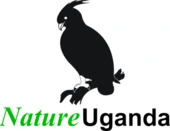PROTECTING OUR HERITAGE: The Grey Crowned Crane

The tall beauty is known to breed in swamps although in recent decades as human population has risen, the wetlands have become degraded and fragmented, with large areas drained and converted for agriculture and livestock production. Wildlife has declined and the Grey Crowned Crane, the National symbol of Uganda is among those affected.
The loss of breeding grounds and food sources have seen populations decline by 80% over the past 40 years. More birds have been persecuted for raiding crops in their territory and others trapped for illegal trade and domestication further contributing to their decline.
For the last decade, NatureUganda has led conservation efforts for the species through activities that focus on the species and its habitat, wetlands. The primary role has been to curb the decline of Grey Crowned Cranes in the species strongholds in Uganda, by maintaining and improving the ecological integrity of wetlands, developing effective methods of protecting breeding pairs, chicks and flocks, and improving the livelihoods of local communities.
The following strategies have been used to subdue this catastrophic decline;
- The development of the National Species Action Plan (SAP) for the Grey Crowned Crane for Uganda.
- Establishing a national Task Force comprised of individuals from various institutions including Ministry of Water and Environment, Ministry of Tourism, Wildlife and Antiquities, Makerere University, Jane Goodall Institute, Uganda Wildlife Authority, Uganda Wildlife Education Centre, Nature and Livelihoods, NatureUganda and the African Crane Conservation Programme to support the implementation of the action plan.
After a series of meetings by the Task Force, great strides have been made towards the SAP completion which is now scheduled to be launched in March 2018 according to the recently concluded task force meeting held in Kampala on 23rd Nov 2017.
How important will the Species Action plan be?
The Species Action plan is critical because it provides national level support towards;
- Implementation of activities that enhance active conservation of cranes and their habitats by reducing adult and juvenile mortality of Grey Crowned Cranes.
- Conservation of Grey Crowned Cranes through reduced loss, fragmentation and degradation of habitats.
- Filling the knowledge gaps about Grey Crowned Cranes and better understand the ecology of the species
- Promoting livelihoods that support Grey Crowned Crane conservation
What should be done?
- Promoting wetlands for tourism – have board walks and other required structures so that people can walk along and into the wetlands and have a feel of the biodiversity there. A viable example is the Kampala wetlands.
- Responsible authorities have to design a balance between infrastructural development and conservation especially for wetland parts that serve as breeding, feeding and roosting sites for the Grey Crowned Cranes.
- Conserving existing local trees and planting more since roosting on electricity poles and pylons is neither a natural phenomenon nor a luxury for cranes, but rather an adaptation mechanism.
- Raising the profile of the Grey Crowned Crane as Uganda’s national bird.
Get involved
Protecting our national symbol is a responsibility which does not segregate against ethnicity or status. When you sign up as a member of Nature Uganda, you support all our conservation efforts including the protection of Uganda's national symbol through advocacy and awareness campaigns.
Become a member
